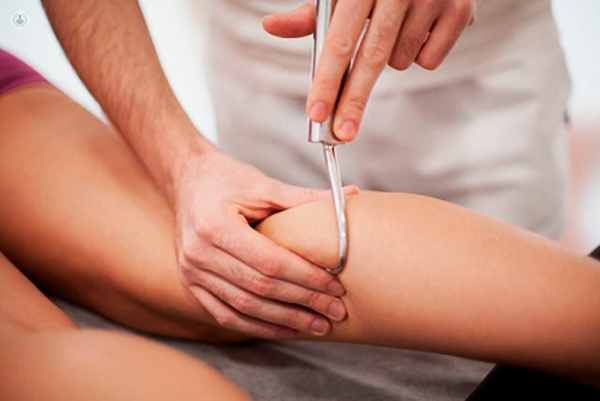Diacutaneous fibrolysis
Lucy Macdonald - Physiotherapy
Created on: 12-16-2014
Updated on: 12-12-2023
Edited by: Kate Forristal
What is diacutaneous fibrolysis?
Diacutaneous fibrolysis is a form of manual therapy performed by a physiotherapist. The treatment originated in the 1950s in Sweden and is characterised by the use of a stainless steel hook to release tension between muscle layers.

Who can benefit from it?
Diacutaneous fibrolysis is designed to treat mechanical pain in the musculoskeletal system, particularly in soft tissue. It is employed in the treatment of a wide variety of conditions which cause musculoskeletal pain, including:
- tendonitis
- plantar fasciitis
- neuralgia
- scar tissue
- sciatica
- carpal tunnel syndrome
- tennis elbow
- muscle contractures
It is important to note, however, that there are no randomised clinical trials which assess the effectiveness of diacutaneous fibrolysis on the conditions listed above. It is classed as an alternative treatment in the UK and not widely practised.
What does it involve?
Treatment is similar to other forms of manual therapy. You will lie down on a comfortable flat surface, and the physiotherapy will assess which area is most suitable for treatment.
A special stainless steel hook is used to penetrate between the muscle layers and target adhesions (scar tissue that prevents movement) and fibrosis (a build-up of collagen). The theory behind the treatment is that the destruction of these tissues can release muscle tissues, restoring mobility and improving pain.
Alternatives to this treatment
Diacutaneous fibrolysis is a low-risk treatment in most cases and can usually be combined with existing medical treatment for your condition.
However, manual therapy isn’t generally recommended for people with:
- bone fractures
- weak bones (due to a condition such as osteoporosis)
- deep vein issues such as DVT
- a heart condition involving taking blood-thinning medications
- burns or wounds
Finally, because there is insufficient evidence that diacutaneous fibrolysis is directly effective in treating musculoskeletal conditions or inflammatory conditions such as arthritis, it is important to continue with the clinical treatment recommended by your doctor.
